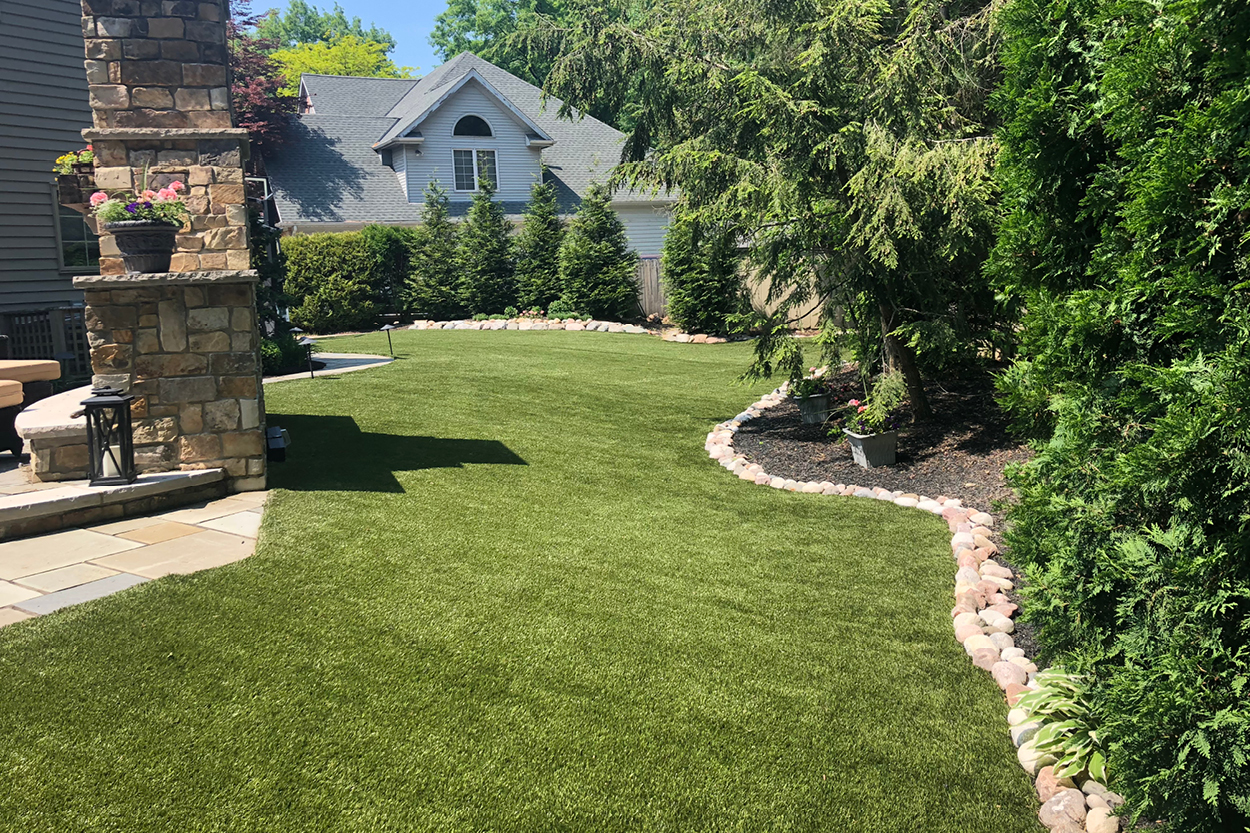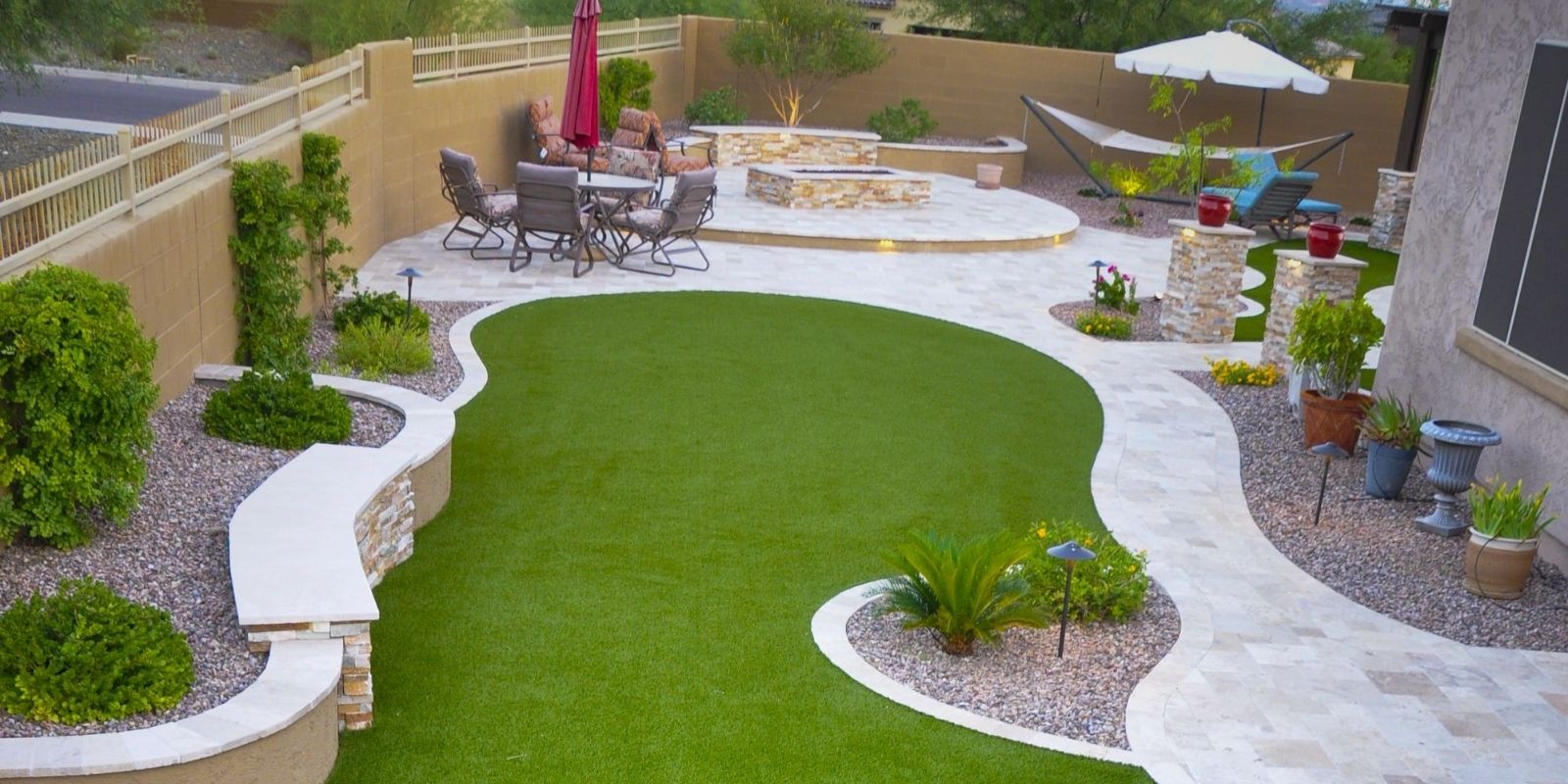Get the Top Turf Installation Phoenix AZ Services for Your Home or Commercial Property
Get the Top Turf Installation Phoenix AZ Services for Your Home or Commercial Property
Blog Article
Explore the Environmental Benefits of Opting for Artificial Turf Solutions
The adoption of synthetic grass services offers a compelling possibility to deal with pressing environmental challenges. By substantially decreasing water usage and reducing the application of unsafe chemicals, these choices not only promote lasting landscaping yet additionally safeguard regional communities. The reduced carbon impact linked with reduced maintenance activities contributes to a much more sustainable approach to land management. The ramifications of these advantages prolong past plain conservation efforts, elevating inquiries concerning their long-term influence on environment preservation and total eco-friendly balance. Checking out these measurements discloses a complicated interplay worth considering.
Water Conservation Perks
One of the most considerable benefits of artificial grass is its ability to preserve water. In comparison, synthetic lawn does not need watering, significantly minimizing the total need for water resources.
By removing the need for routine watering, synthetic turf adds to sustainable landscape methods and assists minimize the ecological effect of excessive water usage. Furthermore, the preservation of water expands to the reduction of runoff, which can bring about soil erosion and waterway pollution.
In addition, the setup of artificial grass enables districts and home owners to assign water resources a lot more efficiently, concentrating on essential usages such as alcohol consumption water and farming. The change in the direction of synthetic grass not just advertises liable water usage but likewise straightens with wider environmental goals focused on preserving natural deposits.
As areas significantly prioritize sustainability, the water preservation benefits of man-made lawn offer an engaging instance for its fostering in property and business landscape design tasks.
Minimized Chemical Use
The shift to synthetic grass significantly reduces the dependence on chemical treatments generally made use of in natural yard upkeep. Typical grass monitoring usually includes the application of fertilizers, pesticides, and herbicides to advertise growth and control bugs. These chemicals can position threats to human wellness, neighborhood wild animals, and the atmosphere, adding to dirt and water contamination.
On the other hand, fabricated grass removes the need for these unsafe materials. When set up, it requires very little upkeep, mostly being composed of normal cleansing and irregular infill replenishment. This decrease in chemical use not just profits the immediate environment yet likewise adds to more comprehensive ecological stability. By minimizing the release of synthetic substances into the community, synthetic grass promotes healthier dirt and water supply.
Furthermore, the lack of chemical overflow connected with synthetic grass installations assists shield neighborhood waterways from pollution, sustaining water life and keeping biodiversity. Turf installation phoenix az. As neighborhoods increasingly focus on sustainable techniques, selecting synthetic grass offers a viable solution that lines up with environmental preservation goals. With this shift, homeowner can take pleasure in lush eco-friendly spaces without jeopardizing ecological wellness, leading the way for an extra sustainable future
Lower Carbon Impact

Moreover, the installment of synthetic grass can result in considerable water preservation. Natural lawns call for considerable quantities of water for watering, which not only contributes to the carbon footprint connected with water removal and treatment but likewise pressures neighborhood water sources. In contrast, synthetic grass requires marginal maintenance, calling for no watering, thereby significantly minimizing water use and its connected power costs.
In addition, the long life of fabricated grass adds to its lower carbon influence. With a life expectancy of as much as 15 years or even more, the requirement for constant replacements is diminished, leading to much less waste and lower power intake in manufacturing and throwing away standard lawn options. Overall, artificial lawn offers a sustainable alternative for environmentally mindful landscape design.
Habitat Conservation
Habitat conservation is a vital consideration in the debate over landscape design options, particularly when comparing artificial turf to natural yard. Natural grass yards commonly require substantial upkeep, including using plant foods, chemicals, and herbicides, websites which can detrimentally influence local environments. These chemicals can leach into the soil and waterways, hurting native flora and animals and interfering with neighborhood imp source environments.
On the other hand, man-made turf presents a chance to minimize the ecological impact of landscaping. By selecting artificial turf, house owners can lessen the disruption of all-natural habitats connected with traditional lawn care methods. Synthetic grass gets rid of the demand for hazardous chemicals, consequently protecting neighboring wildlife and maintaining the stability of bordering ecological communities. The installation of synthetic lawn can lead to the conversion of former lawn locations right into more biodiverse landscapes, such as pollinator yards or native plant locations, which can support regional wildlife.
Ultimately, the change to synthetic grass not only conserves water and decreases upkeep initiatives yet likewise cultivates an extra unified partnership between human tasks and the natural atmosphere, advertising environment conservation while doing so.
Long-Term Sustainability
Lasting sustainability is an important variable in evaluating the advantages of fabricated lawn over standard turf yards. Among one of the most significant benefits of man-made grass is its durability; it can last approximately 15-20 years with minimal upkeep, whereas all-natural lawn requires regular reseeding and substitute. This longevity reduces the requirement for consistent resources, such as water, plant foods, and chemicals, which are important for keeping a healthy yard yard.
In addition, artificial grass adds to a reduction in carbon discharges connected with grass treatment devices. Typical yards commonly require gas-powered mowers, leaners, and blowers, every one of which add to air contamination. Artificial turf companies phoenix. In contrast, synthetic grass eliminates the need for such devices, promoting a cleaner environment
Furthermore, the production of synthetic grass progressively makes use of recycled materials, enhancing its sustainability account. As producers embrace environmentally friendly practices, the environmental impact of synthetic grass proceeds to lessen.

Verdict
The fostering of synthetic grass solutions presents considerable environmental benefits, including substantial water preservation, decreased reliance on harmful chemicals, and a reduced carbon impact. Synthetic grass help in maintaining natural environments by reducing land disruption and advertising long-lasting sustainability with the use of long lasting materials. Jointly, these elements highlight the capacity of synthetic turf to contribute positively to ecological wellness and provide a viable choice to traditional landscaping practices in a progressively resource-conscious globe.
In contrast, fabricated grass does not need watering, substantially decreasing the overall demand for water resources. By decreasing the launch of artificial compounds into the environment, synthetic lawn promotes healthier soil and water systems.
Furthermore, the installation of man-made grass can result in considerable water conservation. In contrast, synthetic lawn requires marginal maintenance, calling for no watering, thereby considerably minimizing water use and its connected energy costs.

Report this page